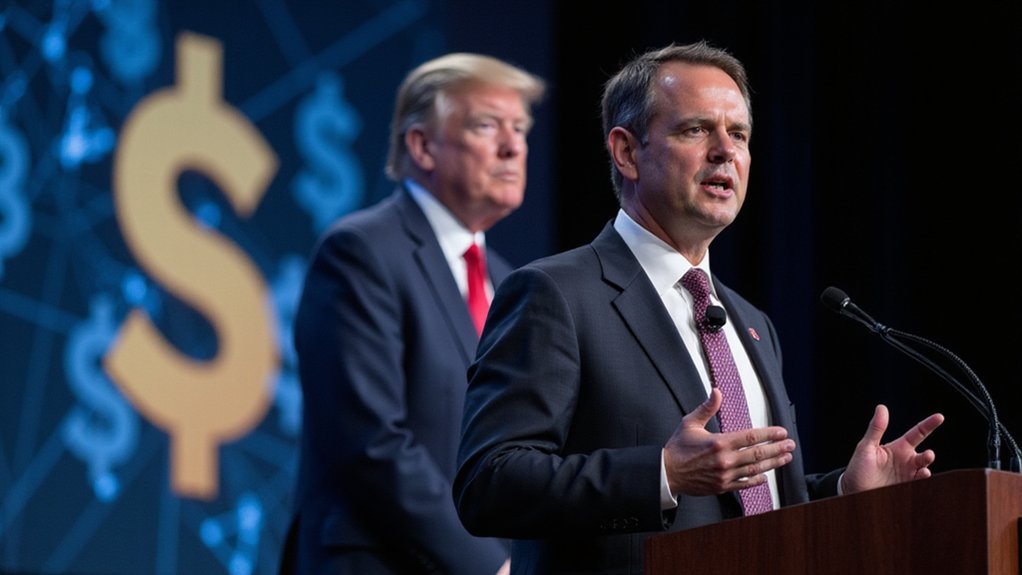Trumpeting a legislative win before the final vote, David Sacks—Trump’s newly minted crypto czar—confidently forecasts Senate passage of the GENIUS Act, a watershed moment for stablecoin regulation that could potentially unlock trillions in economic activity.
The bill, which recently cleared a procedural hurdle with surprising bipartisan support (66-32), represents the most advanced federal effort to regulate dollar-pegged digital currencies in an otherwise Wild West cryptocurrency landscape.
Sacks’ prognostication hinges on mathematics that even the most partisan bean-counters can’t ignore: fifteen Democrats crossing the aisle signals momentum that could carry the legislation across the finish line.
The bipartisan calculus speaks volumes—fifteen Democrats breaking ranks creates mathematical momentum even Washington’s most entrenched partisans cannot dismiss.
The implications? Nothing short of revolutionary for Treasury markets, with Sacks suggesting regulated stablecoins would immediately catalyze demand for government securities—a tantalizing proposition for debt-laden federal coffers.
Yet the GENIUS Act’s path remains littered with potential landmines, not least Senator Hawley’s credit card fee amendment that threatens to alienate financial industry supporters.
The irony of regulatory clarity emerging from an administration previously antagonistic toward cryptocurrency oversight hasn’t escaped market observers. While bitcoin mining remains federally legal, operators must navigate an increasingly complex patchwork of state regulations and tax obligations.
Meanwhile, ethical questions hover like specters over the proceedings.
The Trump family’s connections to World Liberty Financial—backers of the USD1 stablecoin with its $2 billion Abu Dhabi investment via the recently-fined Binance—raise uncomfortable questions about who stands to benefit from this regulatory green light.
Sacks’ disclosure of divesting $200 million in crypto assets before his White House role offers transparency, though hardly dispels all concerns.
The stablecoin market itself presents a compelling case for oversight.
With transaction volumes reaching a staggering $28 trillion last year (outpacing both Mastercard and Visa combined), these digital dollars have graduated from crypto curiosity to financial infrastructure.
Tether’s 60% market dominance and growing institutional banking relationships suggest the sector has already achieved a maturity that regulation would merely acknowledge rather than create.
The market landscape shows significant concentration with Tether holding 60% of the stablecoin market while maintaining banking relationships with established firms like Cantor Fitzgerald.
The bill’s ultimate fate remains unwritten, but Sacks’ confidence reflects a broader reality: dollar dominance in digital form awaits only Washington’s blessing.









